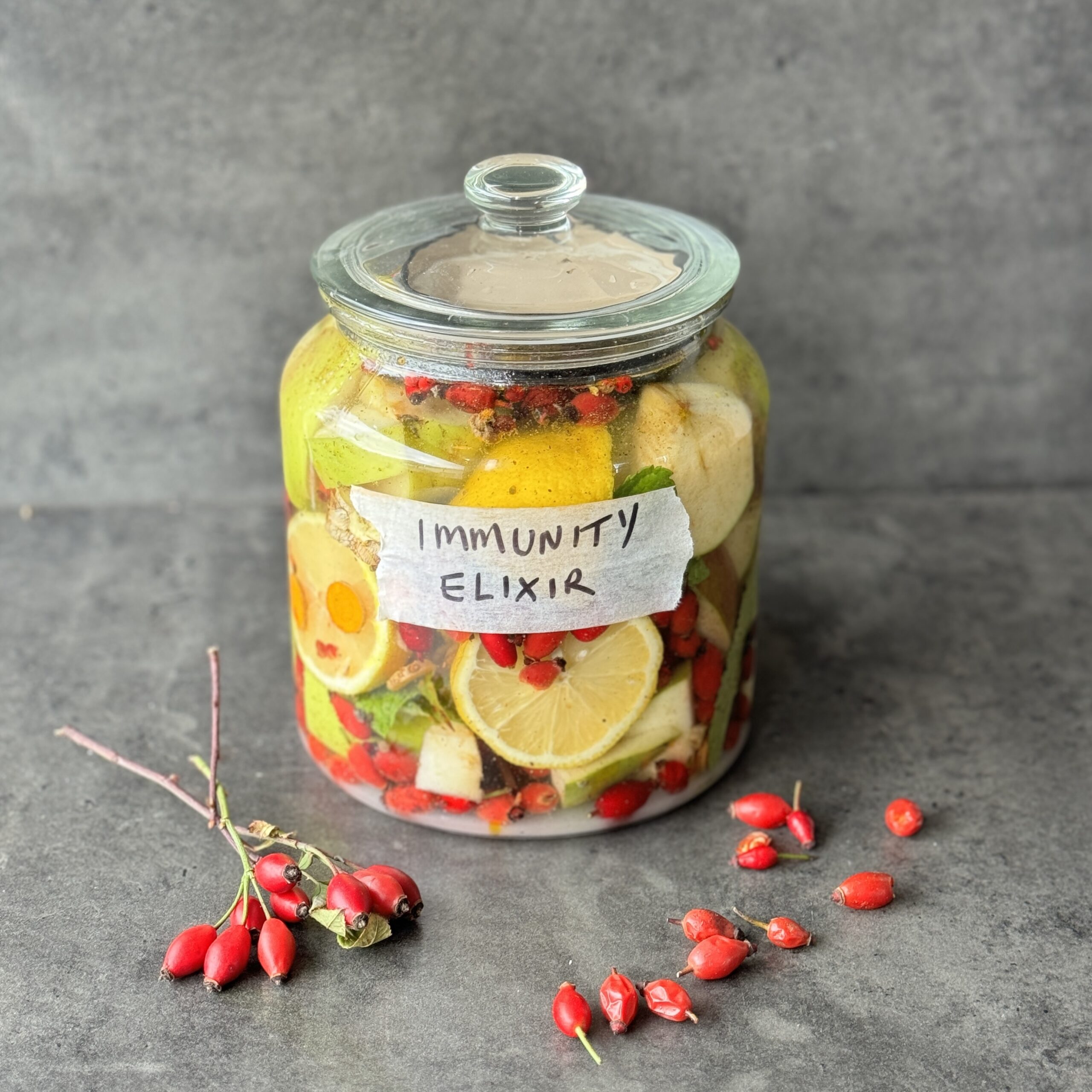
Fermented Immunity Support Fire Cider
We know what you’re thinking - "I’ve seen fire cider before." But trust us, not like this! Most fire cider recipes simply steep ingredients in vinegar, but here we take it a step further by fermenting the vinegar from scratch. Using fresh apples, foraged rosehips, and immune-boosting superfoods, this recipe infuses immunity benefits from the inside out. It's easy to make and a great ally in warding off colds and flus.
Takes 42 days 15 minutes
Serves 16
Ingredients
- 500 g apples about 2-3 apples
- 1 L water 4 cups
- 100 g coconut brown, or white sugar (½ cup)
- Handful of wild rosehips
- 10 g fresh turmeric about 2 teaspoons grated or 1-inch piece
- 10 g fresh ginger about 2 teaspoons grated or 1-inch piece
- 20 g fresh mint leaves 1/2 cup loosely packed leaves
- 2 lemons ideally unwaxed
- Pinch of ground black pepper
- 1 tbsp coconut oil
Instructions
Prepare the jar
- Use a clean, sterilised 1.5-liter glass jar to avoid contamination.
Dissolve the sugar
- In a separate container, dissolve 100g (½ cup) of sugar in 1L (4 cups) of water until fully mixed.
Prepare the ingredients
- Slice the apples into quarters. Finely slice the ginger and turmeric. Cut the lemons into quarters.
Add to the jar
- Add the apple slices, ginger, turmeric, and lemons to the jar. Follow with the mint leaves, a pinch of black pepper, and the coconut oil.
Pour in the sugar water
- Pour the sugar water into the jar, ensuring the ingredients are fully submerged. Use a clean weight or small plate to keep floating pieces submerged.
Cover the jar
- Cover the jar with a breathable cloth (like cheesecloth) and secure it with a rubber band. This allows airflow while keeping dust and bugs out.
Start fermentation
- Place the jar in a warm, dark spot (20-25°C or 68-77°F) for 1 week to 10 days. Stir the mixture every 2-3 days to promote fermentation and prevent mould formation.
Strain and continue fermenting
- After 1 week - 10 days, strain out the solids and return the liquid to the jar. Cover with the cloth again and let it ferment for another 3-4 weeks, stirring occasionally.
Taste test
- After the second fermentation, taste the vinegar. If tangy enough, it’s ready. If not, let it ferment for another week.
Bottle and store
- Transfer the finished vinegar to a clean bottle. Seal tightly and store in the refrigerator or a cool, dark place.